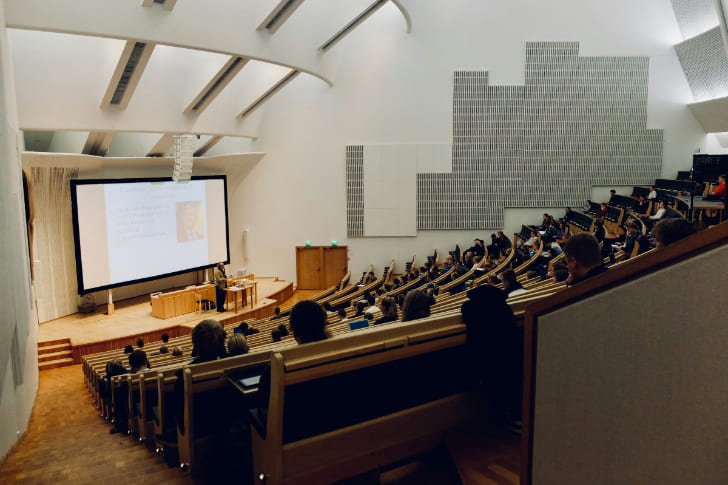Early childhood is often described as the most crucial period in a person’s life. From birth to age eight, children undergo rapid brain development, form social skills, and acquire the foundations of learning that will shape their future. Early Childhood Education (ECE) programs are designed to support this growth, providing structured environments where young children can learn, play, and develop essential skills.
Parents, educators, and policymakers alike recognize the importance of early childhood education, but understanding what these programs entail, their benefits, and how they work can sometimes feel overwhelming.

If you’re considering enrolling your child in an ECE program—or simply want to learn more—here are 10 things you must know about early childhood education programs.
1. Early Childhood Education Covers Birth to Age Eight
The first thing to understand is the age range. Early childhood education programs typically cover children from birth through age eight, though many focus specifically on ages 3–5 (the preschool years).
During this stage:
- The brain develops faster than at any other time in life.
- Language, motor skills, and emotional regulation are formed.
- Habits, routines, and social behaviors are established.
ECE programs recognize the uniqueness of this developmental window and tailor learning environments accordingly. While kindergarten is often seen as the starting point of formal education, quality early education begins years earlier.
2. ECE Is About More Than Academics
A common misconception is that early childhood programs are only about teaching letters, numbers, and colors. While academics play a role, the true focus is holistic development.
These programs nurture growth in multiple areas:
- Cognitive development: Problem-solving, memory, and critical thinking.
- Language and literacy: Vocabulary, storytelling, early reading and writing.
- Social and emotional skills: Sharing, empathy, conflict resolution.
- Physical development: Gross motor skills (running, jumping) and fine motor skills (drawing, cutting).
In other words, ECE helps children become well-rounded individuals, not just students prepared for standardized tests.
3. There Are Different Types of Early Childhood Education Programs
Not all ECE programs look the same. Parents have options depending on their values, budget, and their child’s needs.
Common Types Include:
- Preschools: Structured programs for ages 3–5, often half-day or full-day.
- Daycare/Childcare Centers: Care-focused programs that may integrate educational activities.
- Head Start Programs: Federally funded U.S. programs for low-income families.
- Montessori Schools: Emphasize independence, self-directed learning, and mixed-age classrooms.
- Reggio Emilia Approach: Focuses on project-based learning and community involvement.
- Waldorf Schools: Blend creative play, storytelling, and imagination with academics.
Understanding these models helps parents choose the best fit for their child.
4. Teacher Quality Matters Immensely
The heart of any early childhood program is its teachers. Research consistently shows that teacher quality is one of the strongest predictors of student success.
Great early childhood educators:
- Understand child development and milestones.
- Use play-based and age-appropriate teaching methods.
- Foster safe, supportive, and inclusive environments.
- Communicate effectively with parents.
When evaluating a program, pay attention not just to the curriculum, but also to teacher training, experience, and staff-to-child ratios. The smaller the ratio, the more individual attention children receive.
5. Play Is a Core Learning Strategy
For young children, play is learning. Through play, kids experiment, problem-solve, and express creativity. Quality ECE programs use structured and unstructured play as central teaching tools.
Examples of play-based learning include:
- Building with blocks to understand math and physics.
- Role-playing to develop language and social skills.
- Drawing and painting to build fine motor skills and creativity.
- Outdoor play to strengthen physical development and teamwork.
Parents sometimes worry that play means “wasting time,” but in early childhood education, play is carefully designed to support essential skills.
6. Early Education Programs Benefit Long-Term Success
The value of ECE goes far beyond kindergarten readiness. Numerous studies, including the famous Perry Preschool Project and Abecedarian Project, have shown that children who attend quality early learning programs experience:
- Higher academic achievement.
- Better social skills and emotional regulation.
- Lower dropout rates.
- Greater likelihood of attending college.
- Higher lifetime earnings.
- Reduced involvement in crime or risky behaviors.
In other words, investing in early education doesn’t just benefit the child—it benefits society as a whole. Economists even argue that funding ECE programs provides one of the highest returns on investment in education.
7. Parent Involvement Is Essential
ECE programs are most effective when parents actively participate. Teachers and caregivers can provide structured learning, but parental reinforcement at home is just as important.
Ways parents can get involved:
- Reading with their child daily.
- Communicating regularly with teachers.
- Attending parent-teacher meetings and workshops.
- Extending classroom lessons through home activities.
Many programs encourage parent involvement through newsletters, apps, or family events. When children see their parents engaged, they feel more motivated and supported.
8. Accessibility and Cost Can Be Challenges
One of the biggest issues in early childhood education is accessibility. High-quality programs can be expensive, and availability varies depending on location.
- In the U.S., full-time childcare can cost as much as college tuition in some states.
- Publicly funded programs like Head Start exist, but spots are limited.
- Many parents face long waitlists for reputable preschools.
This lack of affordability and access has led policymakers to push for expanded universal pre-K initiatives. Until then, parents often balance cost with program quality when making decisions.
9. Technology Is Becoming a Bigger Part of ECE
In today’s digital world, technology is finding its way into early childhood classrooms. While screen time for young children should be limited, when used thoughtfully, tech can enhance learning.
Examples include:
- Interactive educational apps that promote literacy and math skills.
- Digital storytelling tools.
- Video calls for parent-teacher communication.
- Learning platforms that track progress.
The key is balance—technology should support, not replace, hands-on exploration, social interaction, and creative play. Programs that integrate tech carefully tend to see the best outcomes.
10. Not All Programs Are Equal—Do Your Research
Finally, it’s essential to recognize that not all ECE programs are created equal. Some offer enriching, evidence-based learning environments, while others may lack structure, safety, or qualified staff.
When evaluating programs, parents should look at:
- Accreditation (from organizations like NAEYC in the U.S.).
- Teacher qualifications and ongoing training.
- Curriculum and teaching philosophy.
- Safety standards and cleanliness.
- Child-to-teacher ratios.
- Parent reviews and word-of-mouth recommendations.
Visiting classrooms, asking questions, and observing interactions between teachers and children can reveal a lot about the program’s quality.
Final Thoughts
Early childhood education programs provide more than just care for young children—they offer the building blocks for a lifetime of learning, growth, and success. From social-emotional development to cognitive skills, ECE shapes the foundation on which future education rests.
The 10 things covered in this article highlight the essentials every parent, caregiver, or educator should understand:
- The critical age range ECE serves.
- The focus on holistic development beyond academics.
- The different program types available.
- The importance of teacher quality.
- The central role of play.
- The long-term benefits of ECE.
- The need for parental involvement.
- The challenges of accessibility and cost.
- The careful integration of technology.
- The importance of researching program quality.
By being informed, families can make wise choices that not only benefit their children but also contribute to stronger communities. After all, when children thrive, society thrives.








Leave a Reply